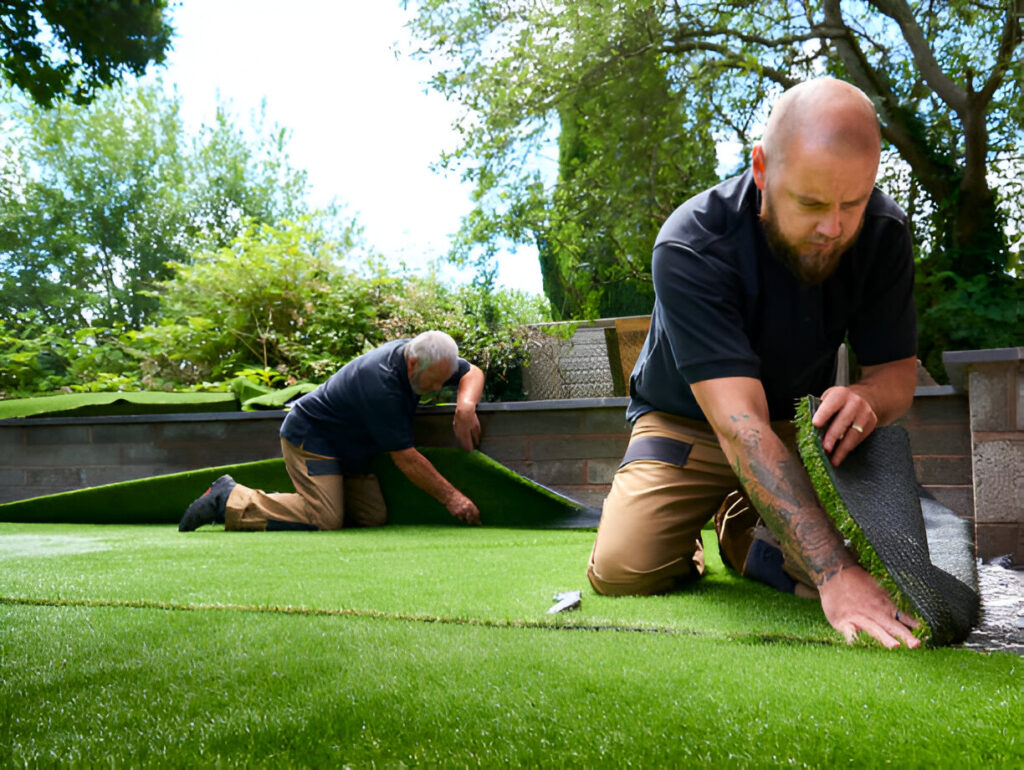As long as there is adequate moisture, you can install sod at anytime of the season. Note that the ideal time for installing sod is early spring or late fall.
What Is Sod Installation?
Sod installation is a landscaping service project that you can do yourself. Sodding a lawn is also much quicker than growing one from grass seeds.
How Do You Prepare Your Soil for Sod?
Sod gets a bad reputation, but that’s often undeserved. When laid correctly on prepared soil, it can thrive. The key is to start with a solid foundation.
1. Remove Existing Grass
You should remove any existing grass or vegetation and remove only the top layer of grass and roots, not the underlying soil. On top of that, you should rent a grub hoe, as its blade efficiently strips off the top layer of grass.
2. Prepare the Soil
- To ensure that your sod roots are successful, you will have to loosen the top part of the soil.
- This is usually between 6-8 inches of the soil. You can use a rototiller to do this job.
- Then, you should test your soil before laying the sod.
- You can test your soil any time throughout the year, but the best time to test is in the spring or fall.
- To collect a good sample, dig at least five holes six inches deep by two inches wide in various spots in your yard.
- Avoid or remove any grass, weeds, thatch, or roots as you go.
- Mix all the samples, then put about 2 cups into a zip-seal bag.
3. Adding Amendments
After you have removed the old grass, it is time to prepare the soil for your new sod. You should then spread a two-inch layer of compost over the area. Moreover, composting is a great way to improve soil structure, drainage, and nutrient content.
4. Rough Grading
After you are done with the amendments, you will have to use an iron rake to knock down high spots and fill low areas. The target is to create a level surface about an inch below the grade of paved surfaces, such as walkways or driveways. Hold the rake head at a 90-degree angle to move large amounts of soil. For smaller areas, slightly adjust the angle to get more precise control.
5. Fine Grading
After you finish the rough grading, you should use the back of the rake to even out the surface. As a result, this will create an ideal base for laying sod. Fine-tuning the soil surface helps the sod have good contact with the soil beneath, reducing air pockets that can hinder roots.
Upgrade Your Lawn Today
Don’t let your lawn look like junk! Call Advent Lawn Care Services for landscape curbing near Douglasville, GA, today for your free quote. With our help, healthy grassland can no longer be a figment of imagination but a reality!







